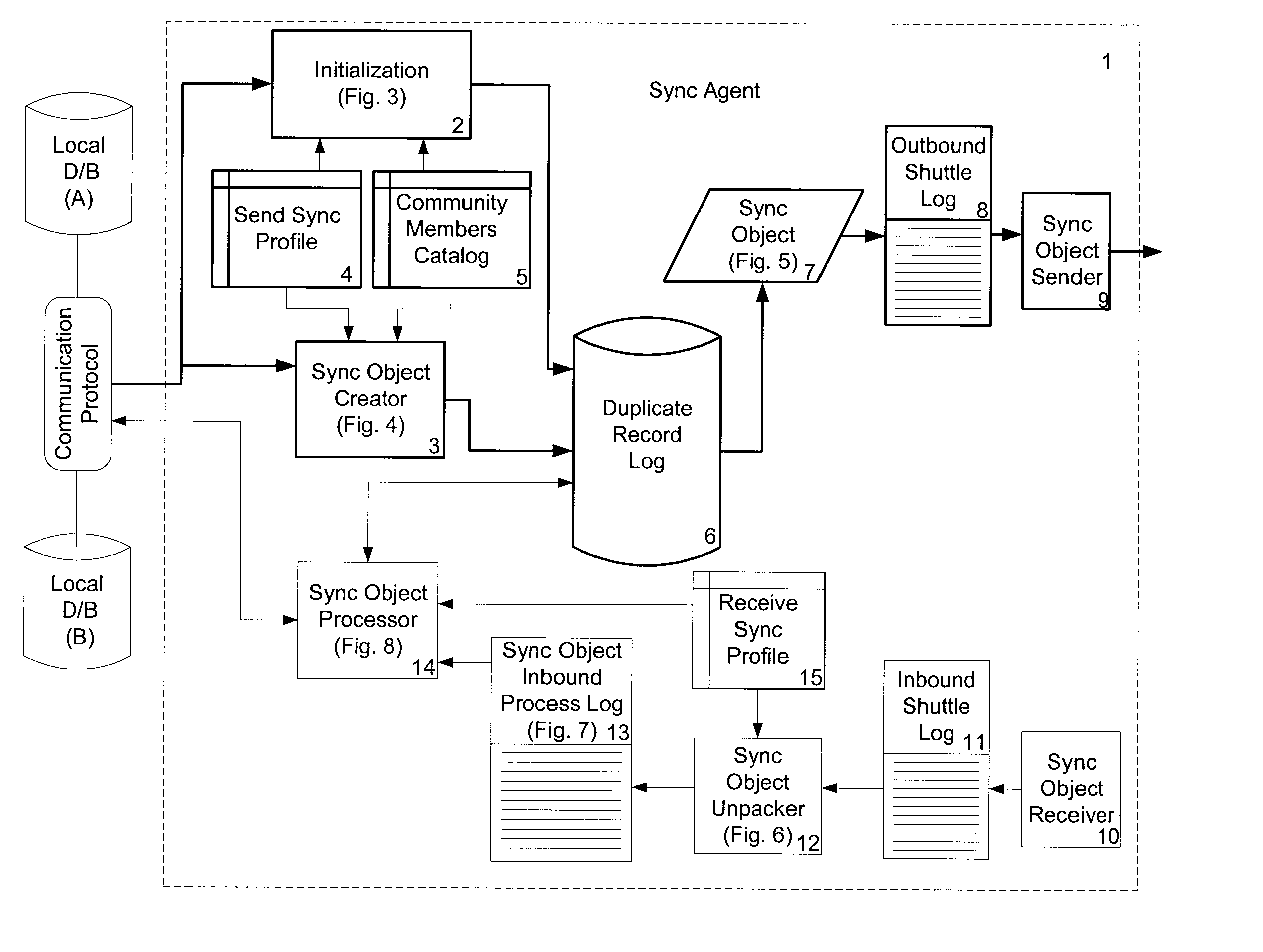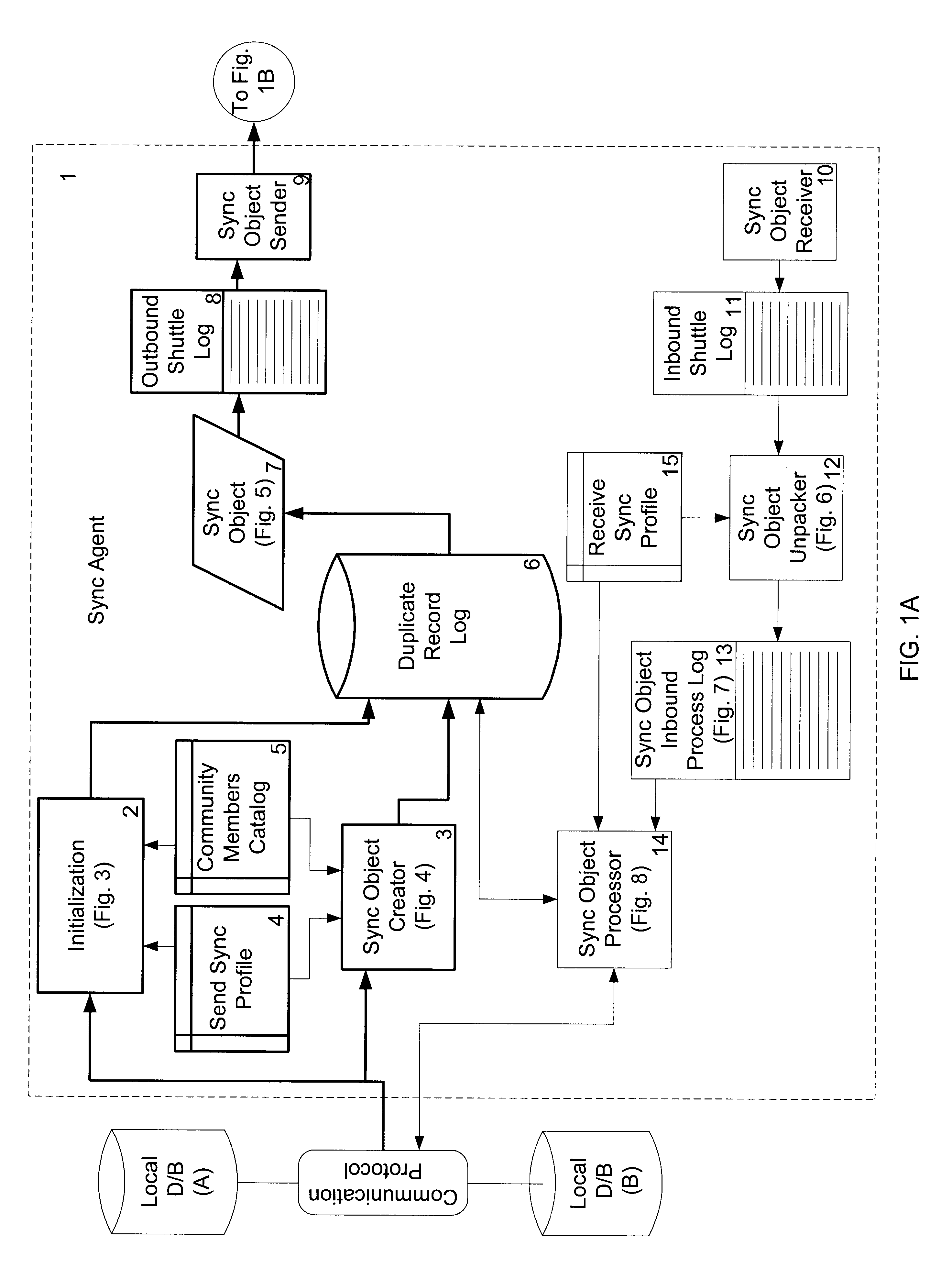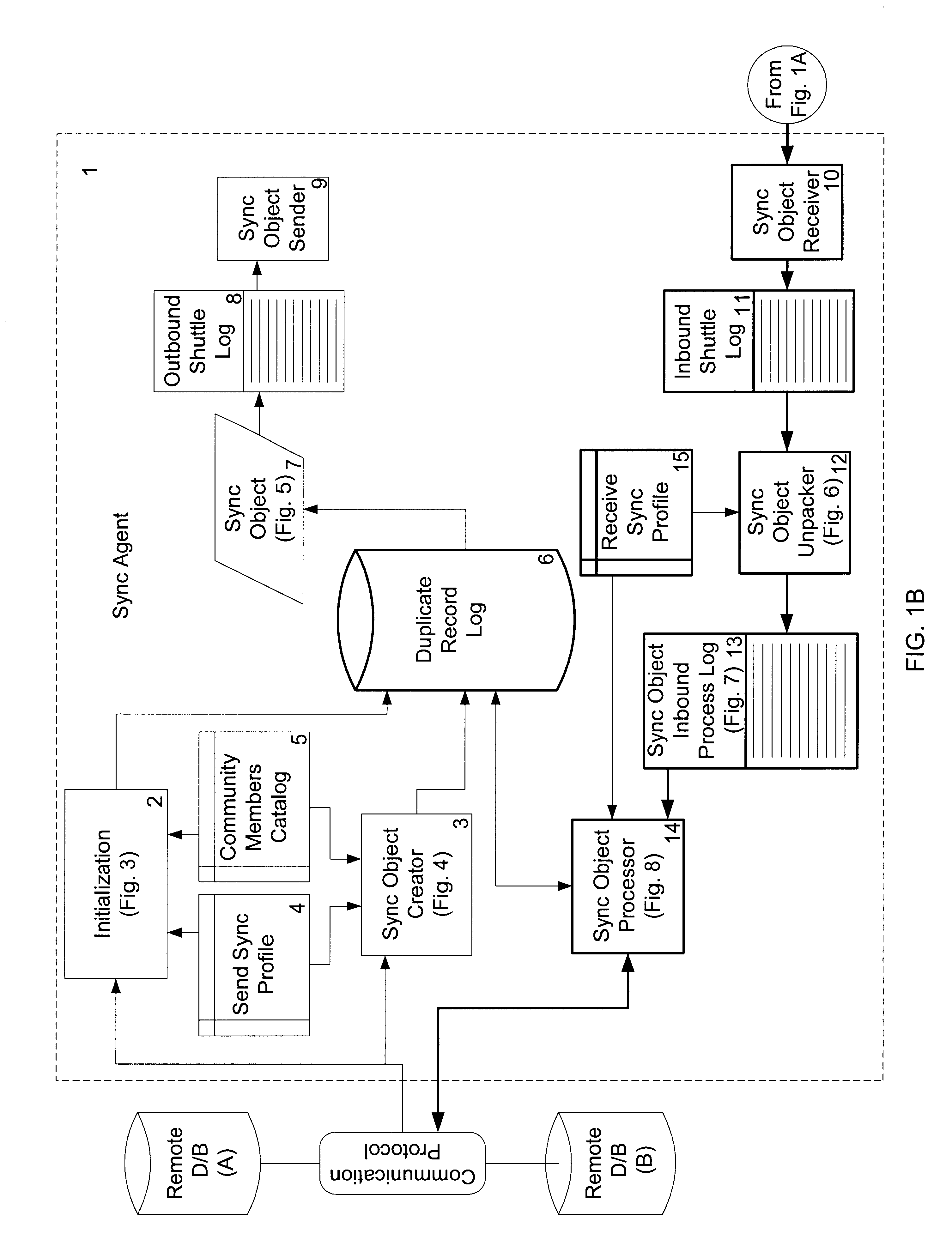Database management and synchronization across a peer-to-peer network
a database and peer-to-peer technology, applied in the field of database management and synchronization across a peer-to-peer network, can solve the problems of overestimation of the degree, inability to achieve scalability, and inability to achieve cross-referencing and decentralization benefits, so as to achieve more efficient communication, constant, complex or costly computer links, and greater control of data consistency
- Summary
- Abstract
- Description
- Claims
- Application Information
AI Technical Summary
Benefits of technology
Problems solved by technology
Method used
Image
Examples
Embodiment Construction
[0051]The present invention comprises a method and system which provides for the Synchronization of shared Database Records in a structured Database information system across a Non-Concentric Peer-to-Peer computer Sharing Community. A general description of the present invention is set forth in FIGS. 1A and 1B. The block diagrams illustrate the relationship between Databases which are stored in the memory of a User Computer and the invention's Sync Agent 1 software program which creates, distributes and processes Sync Objects 7 in order to Synchronize the same Databases stored in the memory of other User Computers within the Sharing Community. The block diagram in FIG. 1A illustrates the architecture of the present invention from the standpoint of a Computer User operating a User Computer containing at least one Local Database which is to be Synchronized with at least one Remote Database contained within another User Computer within the Non-Concentric Peer-to-Peer Sharing Community....
PUM
 Login to View More
Login to View More Abstract
Description
Claims
Application Information
 Login to View More
Login to View More - R&D
- Intellectual Property
- Life Sciences
- Materials
- Tech Scout
- Unparalleled Data Quality
- Higher Quality Content
- 60% Fewer Hallucinations
Browse by: Latest US Patents, China's latest patents, Technical Efficacy Thesaurus, Application Domain, Technology Topic, Popular Technical Reports.
© 2025 PatSnap. All rights reserved.Legal|Privacy policy|Modern Slavery Act Transparency Statement|Sitemap|About US| Contact US: help@patsnap.com



